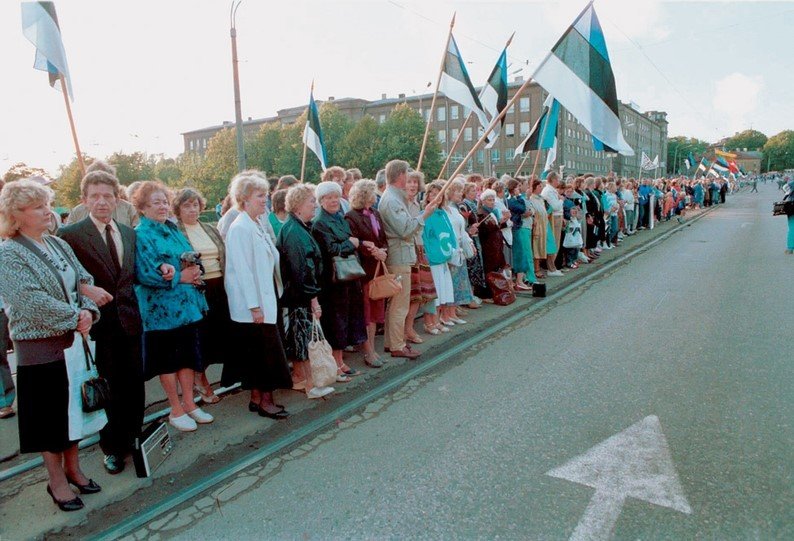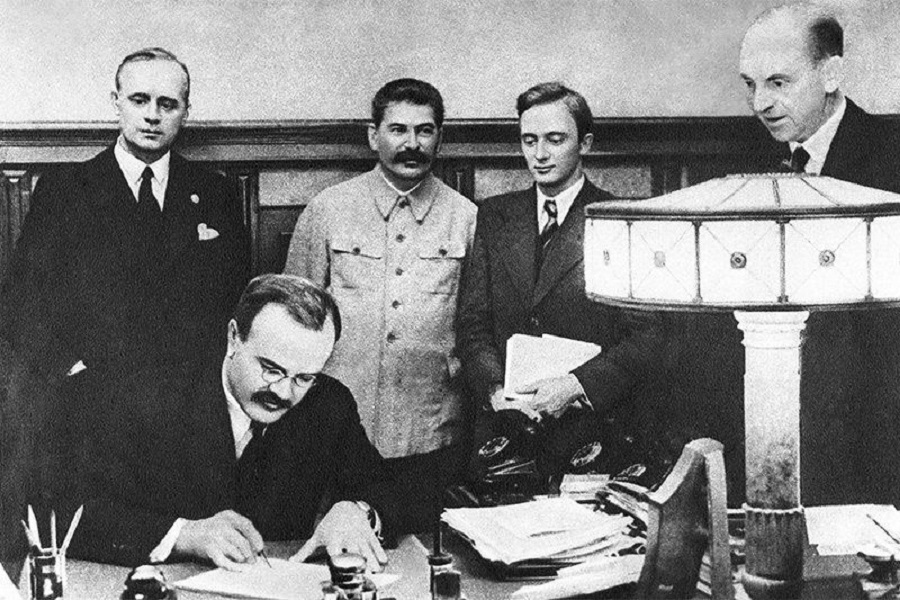The Estonian Museum of Occupations and Freedom, called Vabamu, is creating an experience-based exhibition with sound installations to celebrate the anniversary of the Baltic Way.
In 2019, 30 years have passed since the historic day when nearly two million people gathered together to create a 600-kilometre (430-mile) Baltic Way across the Baltic states. Standing hand in hand, the people expressed their shared desire and aspiration for freedom. The organisers of the Baltic Way were political organisations of the Baltic states: Rahvarinne in Estonia, Tautas Fronte in Latvia and Sajūdis in Lithuania.
The museum’s Baltic Way exhibition creates a sound and memory landscape by giving voices to people’s memories and personal stories. “It is dedicated to the immense potential of unity, cooperation and care, and forms an exceptional space of memory,” the museum said in a statement. “Each guest is welcomed to think about the relevance of this historic day and contemplate on personal responsibility within society.”
The need to remember the unity
“Thirty years ago, Estonians, Latvians and Lithuanians stood hand in hand and proclaimed their right to freedom through this peaceful protest. United belief in independent Baltic states, even though seemingly absurd at first, brought along the wave of independence in Eastern Europe,” Keiu Telve, the executive director of Vabamu, said in a statement. “We need to remember this sense of unity Estonians felt thirty years ago. The same kinds of responsibility, determination and courage are required today to protect freedom on an everyday basis.”

The Baltic Way exhibition opens in a 100-metre (328-foot) dim corridor of the Telliskivi Creative City. Until now, the exhibition space has been unused and inaccessible to the visitors. “The room itself adds a visual layer to the exhibition that speaks about freedom – it brings guests back to Soviet times,” the museum noted.
“The experience-based exhibition allows visitors to become part of the historic day through clips of video and sound that carry memories of participants in the Baltic Way – memories of elated waiting, standing in the middle of fields and forests, on a pathway to home, singing together and feeling the sense of belonging,” the museum said.
Drawing attention to the Molotov-Ribbentrop Pact
“Another layer is added to the experience by sound clips of international media coverage of the protest in 1989. In addition to the experience-based exhibition, bilingual poster exhibition is planned, which can easily be printed out and exhibited in both Estonian embassies and schools all over the world.”
The Baltic Way, also known as the Baltic Chain, was organised in order to draw the world’s attention to the existence of Molotov-Ribbentrop Pact – a treaty signed 50 years prior, on 23 August 1939, between the foreign ministers of the Soviet Union and Germany – Vyacheslav Molotov and Joachim von Ribbentrop.

In the secret protocols that accompanied the treaty of non-aggression, the two totalitarian powers divided Finland, Estonia, Latvia, Lithuania, Poland and Romania in violation of international law into respective spheres of influence, which led to Nazi Germany starting the Second World War on 1 September 1939 with its attack on Poland. The Soviet Union invaded Estonia and Latvia on 16 June 1940.
The exhibition opens at the Telliskivi Creative City on 23 August, the same day that 30 years ago the continuous human chain went across the Baltic states.
It is created in collaboration with the government of Estonia. The visual and technical solutions of the exhibition are created by Motor, the artistic director is Mae Kivilo.
Cover: A minivan taking people to join the Baltic Way in Estonia on 23 August 1989. Photo by Aivar Kaljusaar.

